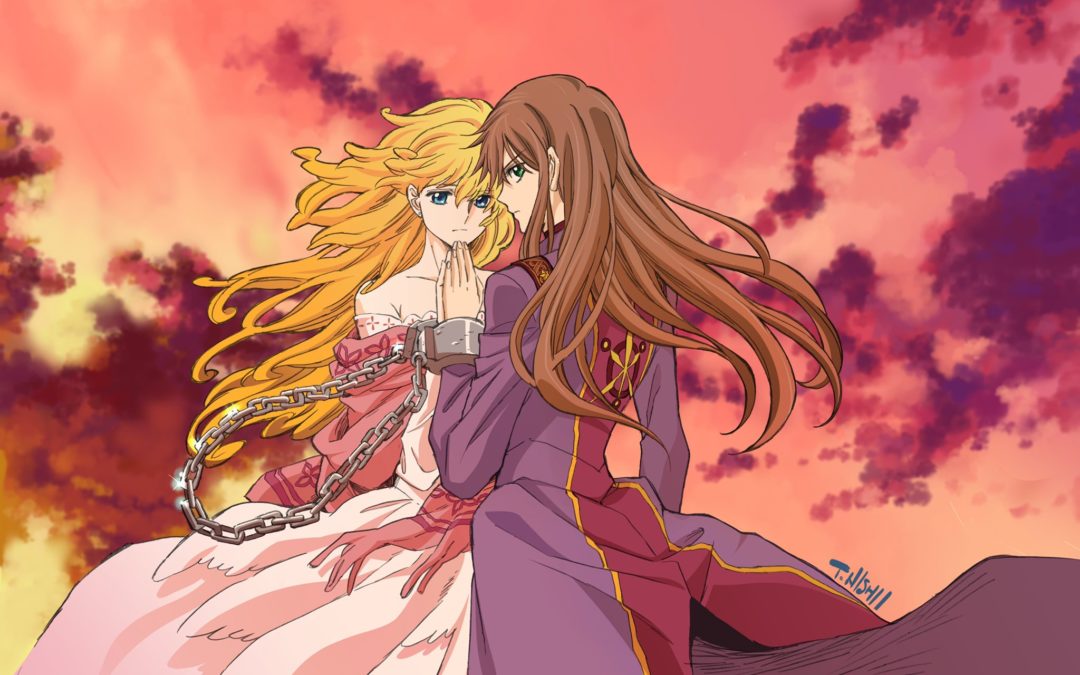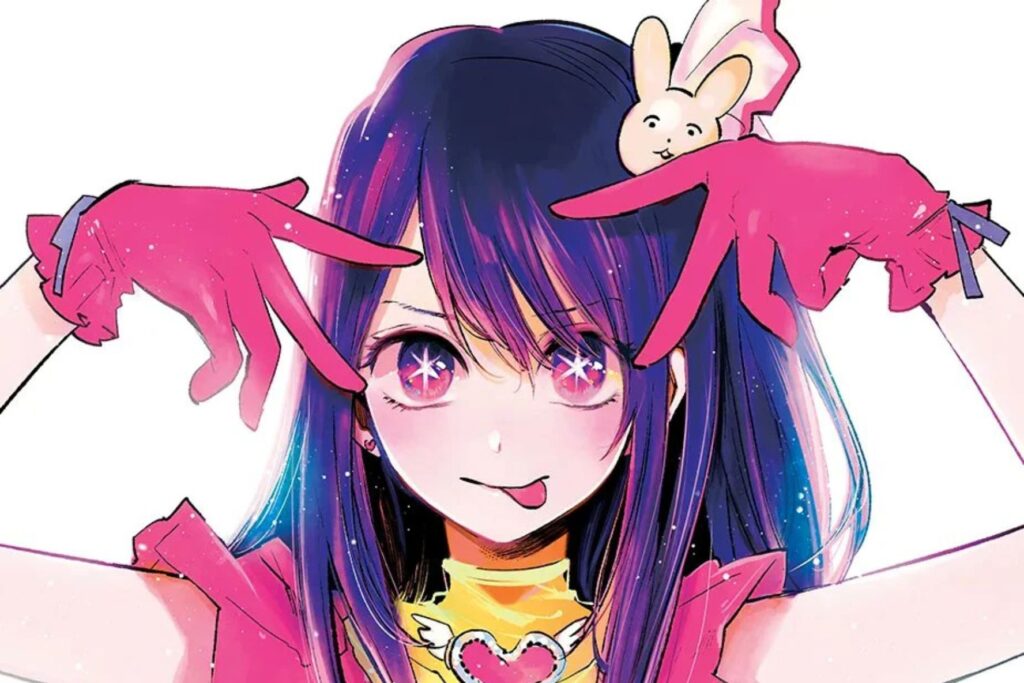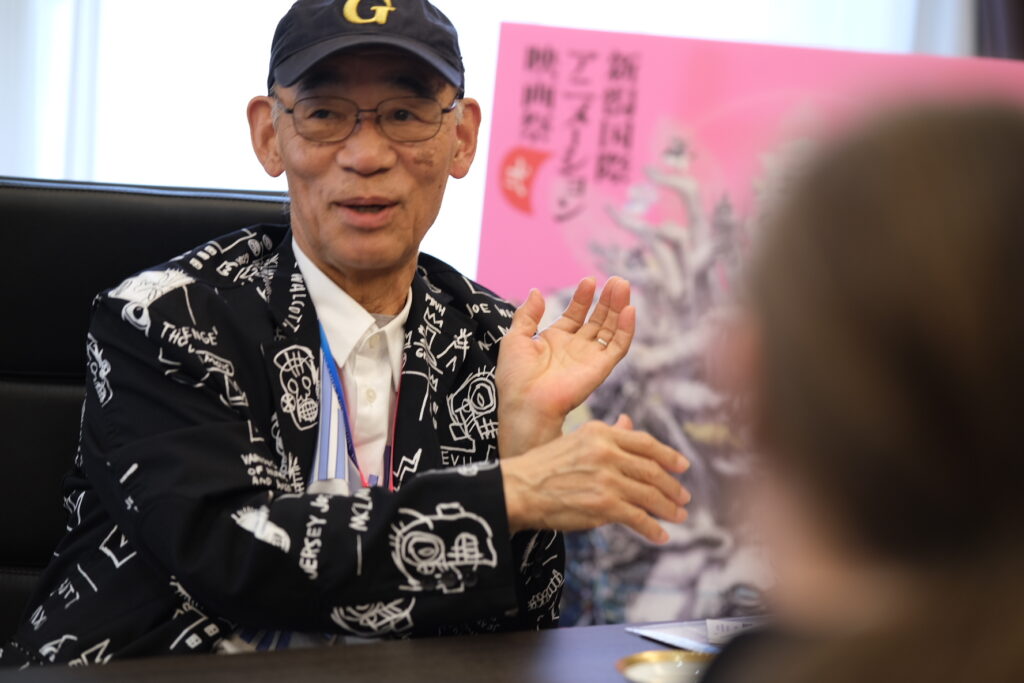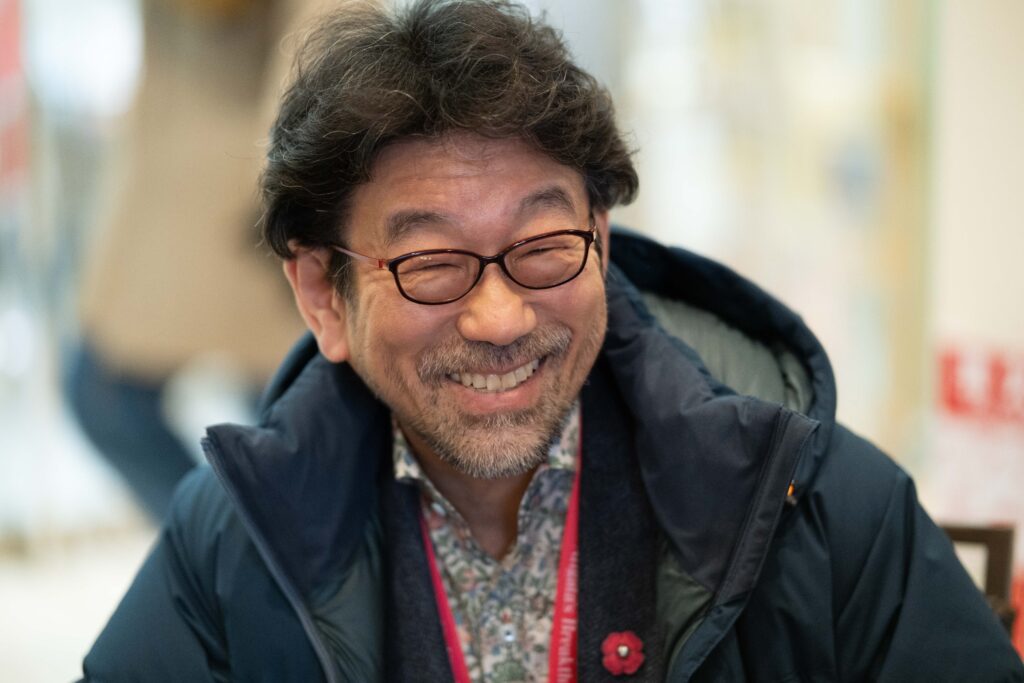This summer, a few days following the release of Saint Seiya Knights of the Zodiac on Netflix, we met with the show’s Character Designer Terumi Nishii in Tokyo. Ms. Nishii is a prolific Character Designer well known for her designs on shows such as Mawaru Penguindrum or the fourth installment of Jojo’s Bizarre Adventure Diamond is Unbreakable. Meeting with her was a great opportunity to talk about her participation on this new Saint Seiya show as a lifelong fan, as well as some earlier steps in her career.
Ms. Nishii is also known for being very vocal on social media about working conditions for animators. This led us to talk about the situation of animators and what can and needs to be done to improve the harsh environment.
Like our content? Feel free to support us on Ko-Fi!
Before wanting to be an animator, you wanted to be a Mangaka. How were you approaching training to be a Mangaka?
Terumi NISHII: Since I’ve been a kid, I’ve always liked Manga, and be it in middle school or high school. I’ve always told myself I’d become a mangaka. That was until I watched Evangelion. I already knew how to make Manga; I had read about it, but I didn’t know how anime was made at all, but it looked very interesting, so I decided to apply to a specialized school. I got more and more interested in it because compared to Manga, where you work alone, for anime you work as a team, it’s more interesting socially. You have a teamwork spirit you don’t find in Manga, despite working with assistants. At that time, I thought this would further help me to become a mangaka, too (laugh).
About the Utena doujinshi, did you do it before or after you joined Studio Cockpit?
T. NISHII: That was before, while I was still at school.
When you joined Studio Cockpit, you trained under Kagawa Hisashi. How did your introduction as a professional animator go?
T. NISHII: I was the one to call M. Kagawa because I liked his work. While I was at school, I took some entry sheets of job offerings to join animation companies, but I found none of those working on the Utena animation. Therefore I looked for old staff rolls, found some contacts, and contacted them directly. Then I went there and did their entrance tests.
What was your first professional work?
T. NISHII: I did in-between animation on the Utena movie.
Wasn’t it challenging to work with an animation team?
T. NISHII: At first, I wasn’t working with a team. At first, while working on the Utena movie, I was only working under M. Kagawa’s direction.
And at what point did you start working under M. Umakoshi?
T. NISHII: As I wanted to grow and get promoted, I wanted to have more responsibilities on a show with M. Kagawa’s Character Designs, but at that time, he wasn’t working on anything. But M. Umakoshi was working on Jubei-chan 2. I was introduced to him by M. Kagawa, and he asked me to come work as an animation director.
Among Sakuga fans, there’s this idea of a lineage going from SUDA Masami to HAYAMA Junichi, then from HAYAMA Junichi to UMAKOSHI Yoshihiko and from UMAKOSHI Yoshihiko to you. Would you agree with such an image?
T. NISHII: I’m very proud that people would include me in such a lineage. Thank you so much. SUDA Masami is a legend. I feel lucky (laughs).
In that case, who is the next member?
T. NISHII: The next one? My Kouhai INO Marie, the Character Designer for Kira Kira Precure A La Mode. And the one after her will probably also be a woman. Women do cool drawings, whereas men do cute ones.
Could you tell us about Studio Shokaze? Why was it created, and how was it working there?
T. NISHII: When we were working on Mushishi, it was produced by Studio Artland. But the studio’s offices were quite far away from the district we’re living in Nerima. We ended up renting a house close to us, which allowed us to work on the show more efficiently. When the show was done, we thought it was a shame it was already over. We had a lot of fun working altogether. That’s how Studio Shokaze came to life, under the direction of M. Umakoshi. It was a great working environment.
They ended up giving you a hand on Mawaru Penguindrum, that’s right?
T. NISHII: Yes, all of them, including M. Umakoshi. He was of great help.
Your first work as an animator was on the Utena movie, and your first work as a Character Designer was on Mawaru Penguindrum. Director IKUHARA Kunihiko’s works have been major stepping stones in your career. How is it working with him?
T. NISHII: It was hard. I’ve been a Character Designer for ten years since then, but that Character Design was the hardest I’ve ever worked on.
Really? How come?
T. NISHII: Because M. Ikuhara kept changing his opinion.
I’ve heard that he’s the kind of person to give a lot of freedom to his teams and leaves them alone a lot, but when he comes back, he has changed his mind on what he wants.
T. NISHII: It’s exactly that. He changed his mind every week.
Regarding Netflix’s Saint Seiya: Knights of the Zodiac, since the designs were intended to be used for CGI animation, did you approach it differently than your usual designs?
T. NISHII: I was asked to adapt Shingo Araki’s design so they would be suitable for 3DCG animation. I like Araki’s drawings, so I would have preferred it if it had been 2D. 3D requires to have volume, and it was hard to find the right spots without putting too much.
Japanese tend to focus much more on lines, whereas westerners focus more on volumes.
T. NISHII: That may be true. It shows in American comics, right? Regarding the structure of the bodies.
In the show, Shun is now a girl, but his design is very tomboyish. Why did you decide to approach it this way?
T. NISHII: Many things happened during production, and many changes were made. A 3D series is not like a movie. It is longer and takes more time and a more extended schedule, and we have to take that into mind. At one point, I was asked to give short hair to Bronze Saints to cut down the costs since long hair was more difficult to animate. Since in the original show, Shun is rather neutral as a character, it would not change him that much as a girl.
I heard Netflix signed for a second season. Will you be again part of the staff?
T. NISHII: A second season has been decided. But it is not official yet. Everybody hopes that it will be successful and leads to a long series. As for me, I think I’ll keep being part of the staff. But don’t talk about it. But I think the director already said on Facebook that the first six episodes were the first half. If that’s the case, then you can mention it.
A lot has been said about the series since it started on Netflix, I have read your comments on the criticism regarding the series. Please don’t worry about those.
T. NISHII: (Laughs)
The prevailing opinion about the show is that storyboards and fight choreography are very well done. The designs, too, are well done. However, one of the main problems is the rhythm of the series. It goes too fast. And all in all, it doesn’t feel like a hot-blooded Nekketsu series.
T. NISHII: I completely understand the problem with the rhythm/speed of the episodes. It is too fast.
It feels like a series aimed at the American market, it’s more of a comical show.
T. NISHII: Indeed. It’s not official yet, but we were asked to introduce the Silver Knights within the first 12 episodes. And this was next to impossible to do it properly. They want to show the Golden Knights as soon as possible. That’s why they rushed the first half storywise.
Why not using some flashbacks then?
T. NISHII: I think the first episode doesn’t fit well. Like everybody, I watched the result on Netflix at the same time as you. I do feel something is not clicking well. I think the first two episodes are not well constructed.
Americans wrote scripts, right?
T. NISHII: Indeed. As I do know the basic story and how the events are happening, I was often surprised by the way it has been constructed. In the blink of an eye, Seiya is getting older. It’s a bit difficult to understand.
I think the main reason is that in the West, regarding animation, each episode is done as a self-contained story. There are very few series whose narration is to be followed in the next episode.
T. NISHII: I see!
They are not used to do series like your average Japanese animation.
T. NISHII: It’s aimed at children; It’s not like American live tv series.
Recently you used Twitter a lot to criticize the working conditions within the animation industry, and I feel you’re now more focused on your Manga rather than on animation. Is that the reason why you are working less on animation productions? Is it too difficult?
T. NISHII: It is not about the fact that it is a hard job, but the fact that the people above are not rising salaries. The salaries are not growing. There are some better salaries above, but the average pay is about ¥500.000 or ¥600.000 [roughly around $4500 and $5200], but with taxes in mind, the net salary is about ¥300.000/¥400.000 [around $2700 and $3700]. And with that, you have to raise kids and such. I have many complaints about it, but most of those in the business do not complain because they don’t have a wife and kids. I don’t have kids too, but what I mean is that there are really few people in that industry who are like the « average » family man. Most of them are just happy with drawing as a job or still in training, but I have my parents to take care of, and as such, I need a decent salary; otherwise, things will get tough in the future. That is why I am so vocal about it.
Lately, you have been working on a Manga. Is that like a doujinshi or for a publisher?
T. NISHII: Yes, I am. It is a doujinshi which I am doing, mostly as a hobby. I don’t intend to plan big things about it or try to turn it into an anime. Sometimes I take commissions even though it is forbidden. Some other animators do, too, but it is not really allowed. People get angry, and fans can be quite vocal about it also. It is not accepted. In Japan, there is no copyright, and no royalties for us, and no shares of the revenues. We get nothing back from all of this. So it is frustrating. I heard that Toei asked animators not to promote their work on twitter. As for myself, I haven’t heard anything from them. Therefore, I keep doing it myself, but it appears many animators stopped doing it. I think this is weird because we are only working freelance, and we can’t even keep the right to promote our own work!
Last year there was a scandal regarding Sunrise and Madhouse as they did not pay their animators or took very long to do so.
T. NISHII: I heard about it too.
I heard you had a similar situation recently on a popular show you worked on?
T. NISHII: Yes, kind of. It is the same for all of us animators. We are not working for the studio. We are working freelance. They are aware they can make us work as hard as possible. Otherwise, they would not bother doing it. In the end, we got a room rent for us close by the studio and lived there to get going with the workload. We were three people living there. We had to do that because we could not get the last train to go back home. The apartment was rent by the studio, and we were paid, but not that much.
Why do you think the working conditions on this show were that bad?
T. NISHII: Frankly, it’s because there wasn’t enough staff, and not enough money to bring more people.
Does the fact that the series itself was composed of four cours might have been a factor in that situation too?
T. NISHII: Possible. But the fact is that the budget was too small. It got higher on the next run of the series because it was too low on the one I worked on. It’s all a matter of budget and people. Not enough budget and not enough people hired.
Some animators, like Yasuhiro Irie, are trying to produce animation independently, like financing by fans on the internet via crowdfunding.
T.NISHII: Oh! Do you mean Halloween Pajama?
Yes Indeed. Do you think it is a viable way to finance independent production so that there is a democratization of such independent productions and being able to improve working conditions? M. Irie is also focused on improving those working conditions.
T.NISHII: I thoroughly applaud what he is trying to do. M. Irie is one of the few very serious and professional people in this industry. But I don’t think it will have any impact on the industry. I think it will at best show a new way to do animation. I think the animation industry will keep on going as it is today.
I heard that the project MechaUde, too, was successful with that new method, but M. Irie still hasn’t reached his goal.
T.NISHII: But MechaUde is a team. It’s a company, TriF studio in Fukuoka, working with five people. However, M. Irie is entirely by himself. It’s more difficult.
You mentioned several times the fact that animators aren’t paid enough. What do you think should be done to improve that situation?
T.NISHII: It all depends on the production committee. Well, it all comes down to money. The flow of money. What could be done? I’m not sure. People in the animation industry are very different. I know many senpais who do not care about money. These people don’t have to look after their parents or aren’t married. I think animators should change their self-awareness and realize what is essential for them; otherwise, things will never change. What do you think the percentage of unmarried animators?
Men only or women too?
T.NISHII: In general.
I’d say about 85 %?
T.NISHII: Wow! So close! It’s 80 %! All those do not care much about money. If the stakes were different, they would. As long as they don’t care, things won’t change much.
Maybe those who are married do not really need a wife or a husband? (laughs)
T.NISHII: They certainly both work, which is not a bad thing. But in the animation industry, everybody is always so busy with work. It’s a tough life. There are lots of problems in this industry.
The problem isn’t that there is no money. It is how the money is allocated, that is the problem.
T.NISHII: It’s possible. But most of them are otakus, so they simply want money to be able to buy DVDs or figures they are craving, like pocket money. But there are more and more women coming, so maybe things will change thanks to them. After all, women are a bit more aware of what is necessary.
Do you think animation fans themselves can do something to help animators?
T.NISHII: Anime fans often ask this question. I think the best thing they can do is watch animes.
Maybe buying DVDs also?
T.NISHII: Even if they buy DVDs, we’ll get no profit from that. At least watch animes on-air or platforms like Netflix, for example. The important is to have high viewing ratings.
But recently, many outsiders are coming in the animation industry, foreign companies, so contracts, for example, are changing a bit. And I think this is a good thing that foreigners are coming, although salaries may look cheap for them.
On top of that, it would be good if more people would speak up about the weird things going on in the industry regarding working conditions. Too few are complaining about it. Mostly that industry was based on paper, not digital or computer-based. But now things are slowly changing thanks to foreigners entering the industry, and digital work increasing. I think those are welcome changes.
Regarding foreigners working in this industry, I have many friends working in this industry in France, and most of them are facing a dilemma as they would like to go to Japan as artistically they feel it fulfills their dream. Still, on the money side, they clearly know that in Europe they would get a better salary.
T.NISHII: Indeed. French people working here are using TVpaint and are working both on Japanese and French projects. Because otherwise, they cannot eat with such a low salary.
At which studio?
T.NISHII: Yapiko. I spoke with some animators from Yapiko. While working on French commercials, they are also working on Jojo and such. I wonder if I should not do the same, working for a foreign company and as a part-time job alongside Japanese projects. That may be more fun. In this era, it’s becoming quite easy to do because work is done digitally rather than on paper.
Indeed. I have a friend in France, M. Takatsu Yukio, who is working on Japanese productions, and he doesn’t need to be in Japan.
T.NISHII: That’s nice. Therefore he works for french animation? How nice!
He still mainly works for Japanese studios. He works a little for French companies too.
T.NISHII: That’s really cool. I would like to do the same.
Sometimes he works on cellphone games.
T.NISHII: This is nice as a guarantee. I did such work myself. Animators are just animators, working 24h/24h on drawings. Nowadays, this is not a life. That’s what I came to realize. In your twenties, it is nice, but after 35 years old, it is much harder. It is sad to see people so exhausted they are sleeping on the floor in the studio. I don’t want to do that, nor that I want to let it done on others.
Indeed. And many animators become ill or die early on because of such work.
T.NISHII: Lots of animators die in their 40s. They aren’t married, so they don’t do a health check, nor do they come back home. They don’t have a real life; all that matters to them is work. There are lots of people like that, and that’s not good.
Is it because you are worried about such things that you started kickboxing?
T. NISHII: Exactly. I need to do some sports. And I have to blame France for that.
France? Why?
T. NISHII: The food was so good; I overate and put on some weight. As well as pasta in Italy. That was so good. And the desserts were delicious. I have to be really careful now. But I want to go again. (laugh)
Like our content? Feel free to support us on Ko-Fi!
You might also be interested in
Oshi no Ko & (Mis)Communication – Short Interview with Aka Akasaka and Mengo Yokoyari
The Oshi no Ko manga, which recently ended its publication, was created through the association of two successful authors, Aka Akasaka, mangaka of the hit love comedy Kaguya-sama: Love Is War, and Mengo Yokoyari, creator of Scum's Wish. During their visit at the...
Ideon is the Ego’s death – Yoshiyuki Tomino Interview [Niigata International Animation Film Festival 2024]
Yoshiyuki Tomino is, without any doubt, one of the most famous and important directors in anime history. Not just one of the creators of Gundam, he is an incredibly prolific creator whose work impacted both robot anime and science-fiction in general. It was during...
“Film festivals are about meetings and discoveries” – Interview with Tarô Maki, Niigata International Animation Film Festival General Producer
As the representative director of planning company Genco, Tarô Maki has been a major figure in the Japanese animation industry for decades. This is due in no part to his role as a producer on some of anime’s greatest successes, notably in the theaters, with films...





Trackbacks/Pingbacks